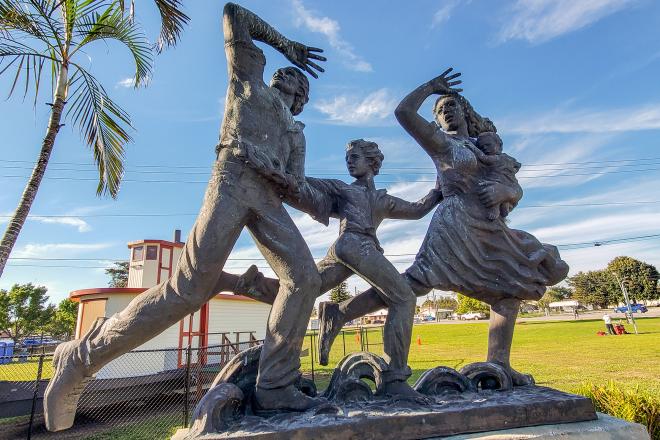The storm of 1928 and the tempest’s legacies
Brett Robert’s research looks at a hurricane that killed thousands across the Caribbean and into Florida. His work grapples explores how racial relationships shape the way people live and die within their environments.
By Kristen de Groot

History Ph.D. candidate Brett Robert’s research on a devastating Caribbean hurricane of 1928 came about after a modern disaster, in a very different part of the world: the 2017 Tubbs wildfire in Santa Rosa, California, which, at the time, was the most destructive fire in that state’s history.
Robert lived in Santa Rosa for over a decade and started his educational journey there, attending night classes at Santa Rosa Junior College while working full time, eventually transferring to Sonoma State to finish his undergraduate degree before earning a master's at California State University, Northridge. He came to Penn to study Latin American history in the fall of the wildfire.
“Pretty much every day I was coming home from class and just hitting f5 over and over on Facebook, trying to check in on my friends to see if they were OK, to see if people needed anything, if I could send supplies,” he says. “That got me really thinking about disaster.”
For his first-year seminar he was encouraged to research a topic that would be different from his dissertation.
“Because disaster was so huge in my personal life and it was the same time that Hurricane Maria hit Puerto Rico, I started looking at disaster in Latin America, focusing on this 1928 hurricane,” he says. “The more I looked into it, the more interesting I found it, and I talked to my advisor, Ann Farnsworth-Alvear, who was really supportive, and I switched topics.”
As he researched the storm, which had different names as it passed through different countries —Cyclone ’28 in Guadeloupe, the San Felipe Segundo hurricane in Puerto Rico, and the Okeechobee Hurricane in Florida—it slowly occurred to him that he’d encountered the storm’s history at various times in his life.
“I realized that it was the same hurricane that Zora Neale Hurston wrote about in ‘Their Eyes Were Watching God,’ which I read in senior year of high school way back in 1998. And then I realized that it was also the same hurricane that Gisèle Pineau, an author from Guadeloupe, depicts in her 1989 novel called ‘Macadam Dreams,’” he says.
He’d originally looked at how the hurricane affected Puerto Rico, but it became apparent it had huge impacts across the Caribbean, in Guadalupe, in Puerto Rico, and into Florida. His dissertation focuses on the powerful hurricane that killed thousands, perhaps tens of thousands, and left hundreds of thousands homeless in September of 1928 as it spread destruction. Alongside cultural sources like art and novels, his research analyzes scientific papers, government and relief organization records, and oral histories in French, English, and Spanish to grapple with the legacies of this tempest.
Conversations with Roquinaldo Ferreira, the Henry Charles Lea Professor of History, who is on his committee, helped Robert think of the hurricane in a trans-local way, looking at how to do studies of history that aren’t bounded or limited by national borders.
“A hurricane is perfect for that, and the boundary of my project became the places where this hurricane had the most severe impact,” Robert says.
Studying an event like the 1928 hurricane is important at this particular point because it shows how essential it is to dig deep and ask questions about how racial relationships shape the way people live and die within their environments, he says.
“Even something like a hurricane—which affects all residents of an area and itself has no bias or ability to discriminate—produced different effects for different groups,” Robert says. “This was not because of how the hurricane behaved but because of systemic problems that propagated racial disparities in the affected regions. In Florida, segregation followed these victims into death, just as it had affected them while they lived.”